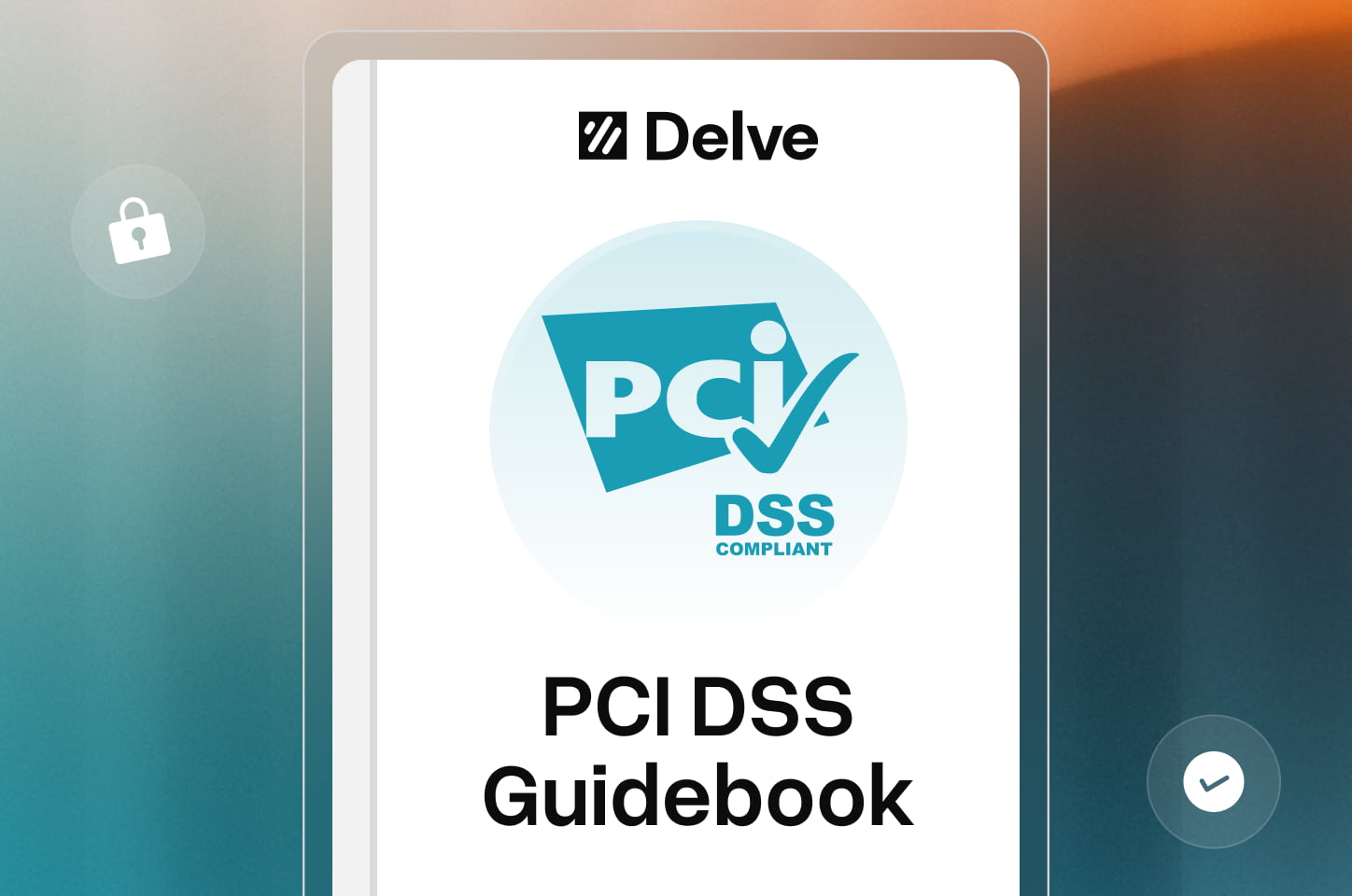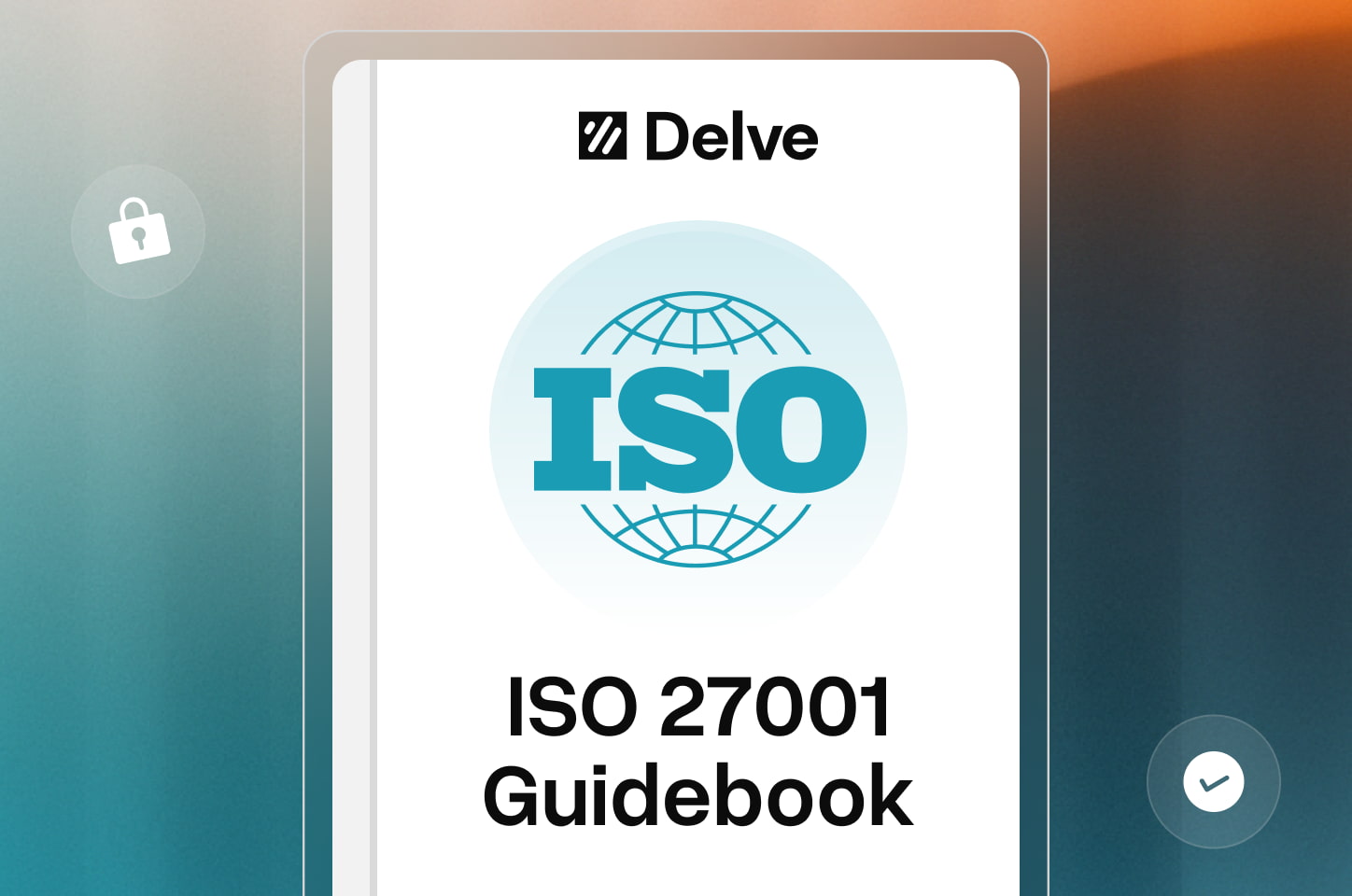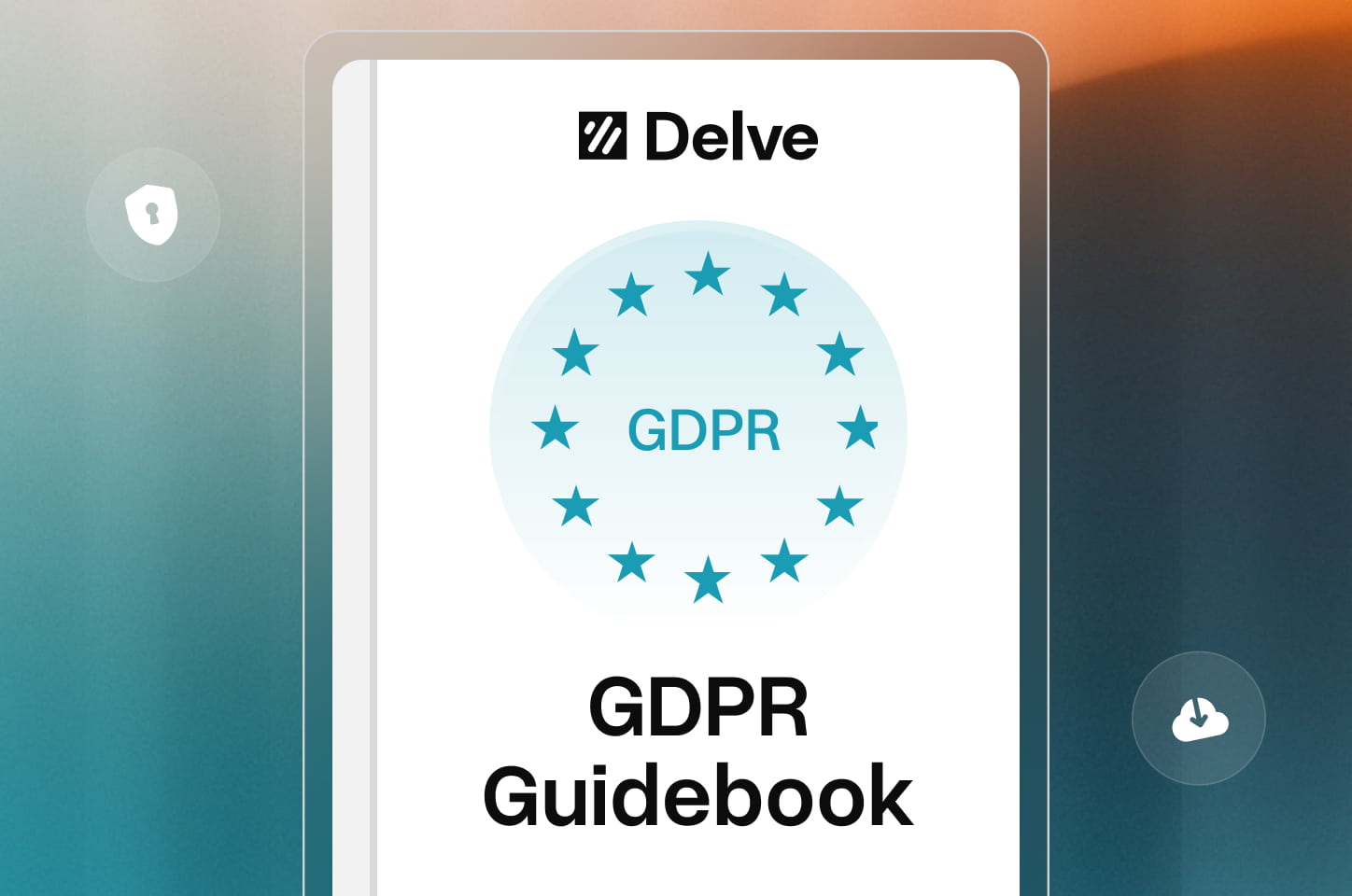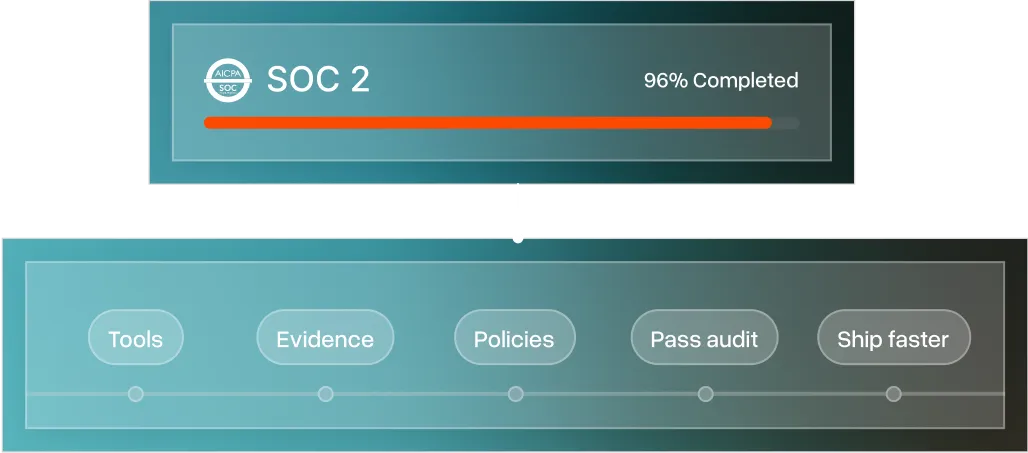A Startup’s Guide to PCI-DSS Compliance
A startup-friendly roadmap to PCI-DSS compliance—understand risks, secure payments, and protect your growth from costly data breaches.

Startup founders in fintech, insurtech, AI, and other sectors often handle customers’ credit card data – and with that comes serious responsibility. PCI DSS (Payment Card Industry Data Security Standard) is the industry rulebook for protecting cardholder information. Neglecting these security standards can be disastrous: in fact, about 60% of small businesses that suffer a cyberattack go out of business within six months. Compliance may sound daunting, but it’s crucial for safeguarding your startup’s future.
This guide explains what PCI DSS is, who needs it, why it matters, and how to achieve compliance in clear, startup-friendly terms – without any jargon. We’ve tapped authoritative sources (PCI Security Standards Council, NIST, CISA, etc.) to ensure accuracy and depth. Let’s dive in.
What Is PCI DSS and Who Must Comply?
PCI DSS is a set of security standards developed in 2006 as an independent body by the major credit card companies (Visa, MasterCard, American Express, Discover, and JCB) and governed by the PCI Security Standards Council. Its purpose is straightforward: to reduce credit card fraud by ensuring any company that handles cardholder data does so securely. PCI DSS isn’t a government law, but a mandatory industry standard enforced through contracts with banks and card networks. In some cases, state laws have even integrated PCI DSS requirements.
Importantly, PCI DSS applies to organizations of all sizes that accept, process, store, or transmit credit or debit card data. That means whether you’re a two-person fintech app or a large SaaS provider, if you deal with card payments in any capacity, you’re expected to follow PCI DSS. There are no exemptions for “small startups” when it comes to protecting card data. Even if you outsource payments to a third-party processor, you still share responsibility for compliance – you must ensure your vendors are PCI compliant and that you properly handle any data you touch. In short:
- Merchants (businesses that accept cards) – must comply, even if a payment service processes transactions for you. You’re responsible for using PCI-compliant providers and following the rules in your environment.
- Service Providers (companies that process or impact card data security on behalf of others) – must comply as well. For example, a startup offering a payment API or a cloud service that stores customer card info has to meet PCI DSS requirements.
Key Takeaway: If your startup in any way handles cardholder information (directly or through a service), PCI DSS compliance is not optional. It’s a universal standard for trust in the payments ecosystem.
Why PCI DSS Compliance Matters (Especially for Startups)
Complying with PCI DSS isn’t just about avoiding rules for their own sake – it’s about protecting your business and customers. Startups are frequent targets for cybercriminals precisely because they often have weaker security. Stolen credit card data can lead to fraud, identity theft, and devastating breaches. Here are a few reasons PCI DSS compliance is critically important:
- Customer and Partner Requirements: Beyond avoiding punishment, showing PCI compliance can be a business enabler. Many B2B customers, payment partners, or enterprise clients will insist that you are PCI compliant (and may ask for proof via a compliance certificate or Attestation of Compliance). Being able to demonstrate that you meet PCI DSS gives you a competitive edge and opens doors to partnerships.
- Liability and Penalties: If you’re caught out of compliance or suffer a breach, the financial penalties can be steep. Card networks (via your bank) can levy fines as high as $5,000 to $100,000 per month for PCI violations. They may also charge $50–90 per affected card account after a breach.
- Preventing Catastrophic Breaches: Weak security can enable attackers to steal thousands of customer card records in minutes. Sadly, billions of sensitive records have been compromised in data breaches over the past decade. A breach of card data not only hurts consumers but can be an existential threat to a young company. Besides immediate cleanup costs, breaches erode user trust permanently.
In summary, PCI DSS compliance protects your startup from hacks, builds market trust, and keeps you in good standing with banks and regulators. As the U.S. Cybersecurity and Infrastructure Security Agency notes, being PCI compliant reduces fraud liability, builds customer trust, and prevents costly fines or account suspensions by payment providers. It’s simply good business.
Understanding the PCI DSS Requirements
So, what does PCI DSS actually require you to do? In plain language: follow security best practices across your technology, people, and processes to protect card data. The standard consists of 12 primary requirements organized into six fundamental objectives. Here’s an overview of these requirements (PCI’s core “to-do” list) and what they mean for a startup:
- Build and Maintain a Secure Network and Systems: This includes installing robust firewalls to protect cardholder data and avoiding vendor default passwords or settings on all systems. In practice, you should configure network firewalls or cloud security groups to only permit necessary traffic, and always change default credentials (routers, servers, applications) to strong, unique passwords.
- Protect Cardholder Data: You must protect stored cardholder data (e.g. don’t store unnecessary card numbers, or if you must, use strong encryption) and encrypt transmission of cardholder data across open networks. Essentially, any card data stored in databases, logs, etc. should be encrypted or tokenized, and whenever card data travels over the internet or other untrusted networks, it must be encrypted (e.g. using TLS).
- Maintain a Vulnerability Management Program: Use up-to-date anti-malware software and regularly scan for and remove viruses (Requirement 5), and keep systems and applications secure through prompt patching and secure development practices (Requirement 6). For a startup, this means installing antivirus/endpoint protection on relevant systems, updating software dependencies, patching operating systems, and fixing security bugs in your code to shut down vulnerabilities.
- Implement Strong Access Control Measures: Restrict access to cardholder data to only those who need to see it (Requirement 7), assign unique IDs to each person with computer access (so activities can be traced, Requirement 8), and limit physical access to devices or paper records containing card data (Requirement 9). In practice, follow least-privilege principles (employees should only access data they absolutely need),.
- Regularly Monitor and Test Networks: Track and monitor all access to network resources and cardholder data (Requirement 10) and regularly test security systems and processes (Requirement 11). \Startups should conduct quarterly vulnerability scans (required for many PCI setups) and periodic penetration tests to ensure no new weaknesses have appeared.
- Maintain an Information Security Policy: Create and maintain a security policy that addresses information security for all personnel (Requirement 12). This means documenting your company’s security procedures and standards – including PCI-related controls – and ensuring your team is trained on them.
These 12 requirements, taken together, cover everything from technical defenses to organizational process. They might feel overwhelming at first, but they largely boil down to common-sense security practices that any prudent company should follow. In fact, the PCI Council emphasizes that the DSS “follows common-sense steps that mirror security best practices”. For a startup founder, it can help to think of PCI compliance not as a checkbox exercise, but as implementing strong security hygiene that will benefit your product and customers.
Steps to Achieve PCI DSS Compliance
Achieving PCI compliance is a project that can be broken into manageable phases. Here’s a step-by-step approach tailored for startups:
Step 1 → Map Your Card DataIdentify all systems that store, process, or transmit cardholder data (your CDE).
Step 2 → Reduce Your ScopeUse third-party processors (like Stripe) and network segmentation to shrink what’s in-scope.
Step 3 → Run a Gap AnalysisAssess your security against PCI DSS controls using a Self-Assessment Questionnaire (SAQ).
Step 4 → Fix the GapsImplement security tools, harden systems, write policies, train your team, and document everything.
Step 5 → Validate Compliance✓ Fill out an SAQ (most common for startups)✓ Or get audited by a QSA if required
Step 6 → Get Your AttestationGenerate an Attestation of Compliance (AOC) to prove you're compliant.
Step 7 → Share and MonitorSubmit your AOC to partners or banks. Keep scanning, reviewing, and renewing every year.
1. Define Scope – Figure Out Where Card Data Lives. The very first step is to determine the scope of your PCI DSS effort. This means identifying all locations, systems, and processes that store, process, or transmit cardholder data, as well as any systems that can connect to those systems. Collectively, this is your Cardholder Data Environment (CDE).
As the PCI guidelines state, “The first step of PCI DSS is to accurately determine the scope… identify all system components that are located within or connected to the cardholder data environment.”. Be thorough: include cloud servers, databases, endpoints, backups, and even paper records if they contain card data. If it can impact the security of cardholder data, it’s in scope.
2. Leverage Scope Reduction Strategies. Once you know your scope, reduce it to what’s truly needed. The smaller the scope, the easier and cheaper compliance will be. Two major strategies for scope reduction are network segmentation and outsourcing:
- Network Segmentation: This means technically isolating your CDE systems from the rest of your IT environment. For instance, you might put your payment database on a separate VLAN or cloud network segment with strict firewall rules. Proper segmentation ensures that systems outside the CDE cannot reach in to the CDE. Why do this? Because segmented systems can be considered out of scope (if they’re completely cut off). This is highly recommended for startups to avoid securing every single system to the max.
- Outsourcing and Third-Party Services: The easiest way to protect card data is not to handle it yourself. Many startups use third-party payment processors (like Stripe, Braintree, etc.) or tokenization services so that sensitive card numbers never hit their servers. For example, using a hosted payment page or mobile SDK that sends card data straight to Stripe means your servers receive only a token, not the raw card number. This can qualify you for a very reduced compliance scope (possibly just an SAQ A questionnaire; more on SAQs shortly).
3. Assess Your Current Security Posture (Gap Analysis). With scope defined (and hopefully minimized), assess where you stand against each of the PCI DSS requirements. This is effectively a readiness assessment or gap analysis. For each of the 12 requirements, ask: Do we meet this? If not, what’s missing?
- The official PCI Self-Assessment Questionnaires (SAQs) can be a helpful baseline for this exercise, even before formally filling them out. There are different SAQ types (A, B, C, D, etc.) depending on your card processing method; your acquiring bank or payment provider can help determine the right one.
- At this stage, you might also consider using a qualified security assessor (QSA) firm for a preliminary gap assessment – they can identify weaknesses you might overlook and interpret requirements for your context. However, for many small startups, a self-assessment guided by PCI documentation may suffice to identify obvious gaps.
4. Remediate – Fix the Gaps and Implement Controls. Next, start addressing the gaps uncovered. This is usually the most time-consuming phase of compliance, where you’ll implement new security controls or improve existing ones to meet PCI DSS. Common remediation tasks for startups include:
- Hardening systems: Configure firewalls, change all default passwords, disable unused services, apply software updates and patches, and remove any unnecessary sensitive data storage.
- Encryption: Enable encryption for stored cardholder data (or use tokenization so you store tokens instead of raw PANs). Ensure TLS (HTTPS) is used for any transmission of card info.
- Access controls: Set up unique user accounts, enforce strong passwords and multi-factor authentication for access to the CDE, and restrict user privileges to the least needed (zero trust approach). Also, establish physical security if applicable (lock server rooms or cabinets with card data).
- Security tools: Install anti-malware software on servers or endpoints in the CDE and set it to regularly update and scan. If using cloud instances, leverage cloud provider tools for malware and vulnerability scanning.
- Logging and monitoring: Configure system logs on card data systems to record access and security events (who accessed what and when). Implement file integrity monitoring or intrusion detection if feasible, or use a managed logging service. Set up alerts for suspicious activities (e.g., multiple failed login attempts, disabled logging, etc.).
- Policies and documentation: Write down your Information Security Policy covering PCI DSS controls. Also document procedures like how to handle an incident, how to add a new system to the card data environment, etc. PCI compliance involves a lot of documentation – both to guide your team and to provide evidence to assessors. If you don’t have things like change management or incident response policies, now is the time to create them (even if lightweight).
- Security training: Train your team on security practices and their responsibilities. This could be as simple as a security awareness briefing covering topics like phishing, proper use of work devices, and rules for handling customer payment info. Make sure everyone understands the importance of protecting card data and following the policies.
During remediation, you’ll likely iterate on some tasks – for instance, tightening configurations, then re-scanning to see if vulnerabilities remain. Keep thorough records of the changes you make; this will help in the verification step and in demonstrating compliance later.
5. Validate and Document Compliance (SAQ or Audit). Once you believe you meet all applicable requirements, it’s time to formally validate your compliance and produce the required documentation:
- Self-Assessment Questionnaire (SAQ): If your startup is eligible to self-assess (which is common for lower-tier merchants or those who entirely outsource payments), you’ll fill out a PCI SAQ – essentially a checklist where you attest (on the honor system, but with evidence) that you meet each relevant requirement. There are different SAQ types; for example, SAQ A is for e-commerce sites that outsource all card processing (only minimal requirements apply), SAQ D is the most comprehensive (for service providers or merchants with complex environments). Answer all questions truthfully and be prepared to provide the evidence if asked. When in doubt, consult your acquiring bank or payment processor; they might require a specific SAQ and quarterly network scans by an Approved Scanning Vendor (ASV) if you have internet-facing components.
Most startups that Delve works with and generally in the B2B SaaS space are SAQ D service providers.
- Qualified Security Assessor (QSA) Audit: If you are a Level 1 merchant (typically processing over 6 million transactions/year) or a service provider handling large volumes, you’ll need a QSA-led assessment resulting in a Report on Compliance (ROC). For most early-stage startups this is not required unless you quickly scale or handle a lot of card data, but it could become relevant as you grow. In a QSA assessment, an independent auditor will review your controls, examine evidence, perform technical testing, and compile a report. This is a much more rigorous validation. The QSA’s report or certificate will serve as proof of compliance to banks and partners.
- Attestation of Compliance (AOC): Whether you do an SAQ or ROC, typically you (and/or the QSA) will also complete an Attestation of Compliance – a formal statement that you are compliant as of a certain date. This is what you submit to the requesting entity (often your acquiring bank or a big client) to demonstrate PCI compliance.
If you undergo a formal audit and gaps are found, you may get a chance to remediate them (often called a “remediation or exception period”) and then finalize the compliance report. The end goal is to have documentation that all PCI DSS requirements are met.
6. Report and Submit – Finally, submit the required compliance reports to the appropriate parties. Usually, merchants send their SAQ/AOC to their acquiring bank (or sometimes to the payment processor) on an annual basis. Service providers might have to furnish their compliance certificate to B2B customers. Ensure you know who needs to see your PCI compliance documents – for example, sometimes a larger enterprise client of yours might request your AOC before they’ll let you process their customers’ cards. Be ready to share these documents under NDA if needed to prove your compliance.
At this stage, you’re effectively “PCI compliant” for the year – congratulations! But don’t get too comfy, because true security is an ongoing effort, as the next section emphasizes.
Tips and Resources for Startups on the Road to PCI Compliance
Finally, a few practical tips and resources to help your startup achieve and maintain PCI compliance:
- Understand your burden: The PCI Security Standards Council provides free resources like official Quick Reference Guides, FAQs, and glossaries to clarify requirements. Once you’ve Ascertain whether you are a service provider or a merchant. Figure out what SAQ you fall under and what your requirements are.
- Find a compliance automation platform: A compliance automation platform will help you get through this process as simply as possible. Delve is a great option for this - we pair all clients with one of our compliance experts to scope your requirements and personally help you through PCI DSS. Other platforms like Vanta and Drata are good alternatives, but often take a lot longer than Delve.
- Automation and DevSecOps: Integrating security into your development and deployment pipeline can lighten the PCI burden. Consider using Delve’s AI-powered code scanning for security issues, infrastructure-as-code scripts that enforce secure configurations, and continuous monitoring services. Many startups adopt a DevSecOps approach so that security checks happen alongside development – this way, compliance requirements like access control, encryption, and logging can be baked into systems from the start rather than added last-minute.
- Professional Help: If PCI compliance still feels overwhelming, don’t hesitate to seek professional help. Qualified Security Assessors (QSAs) or security consultants can provide guidance or even handle much of the heavy lifting in preparing for compliance. Delve can help get you in touch with them, and will ensure you get all the support you need during your time working with us.
- Security as a Selling Point: Embrace compliance and security as part of your value proposition. When talking to customers or investors, being able to say “We comply with PCI DSS and follow industry best practices to protect your data” is a strong positive signal. In an era of frequent breaches, startups that prioritize security stand out. Use that to your advantage – far from being just a cost, your security investments can become marketing assets (just be sure you genuinely follow through on them).
Conclusion
Achieving PCI DSS compliance as a startup might feel like a journey through a dense forest of requirements – but with the right map and mindset, it’s entirely navigable. We’ve reviewed how PCI DSS is an industry standard that applies to any business handling card payments, and why it’s so vital for protecting your customers and your company’s future. You’ve learned that compliance boils down to implementing solid security practices: firewalls, encryption, access controls, monitoring, policies, and ongoing vigilance. By breaking the process into steps – scope, assess, remediate, validate, and maintain – you can tackle PCI compliance without overwhelming your team.
In the fast-paced world of startups, where pivot and growth are daily watchwords, don’t let security and compliance fall by the wayside. Breaches can and do happen to companies of any size, and the impact on a young company can be irreversible. The good news is, by following PCI DSS and industry best practices, you can significantly reduce your risk and even turn strong security into a competitive advantage. As one cybersecurity course puts it, being PCI compliant “reduces liability risk, builds customer loyalty, and prevents fines and account suspensions” – all of which are crucial for a startup aiming to scale sustainably.
In summary: Take PCI DSS compliance one step at a time, use the wealth of guidance available from credible sources, and treat security as a continuous priority. Your customers, partners, and future self will thank you. With diligence and the right approach, even a lean startup can achieve rock-solid payment security. Stay safe, keep innovating, and good luck on your road to PCI compliance!
More Guidebooks



Don't let manual compliance slow you down.






